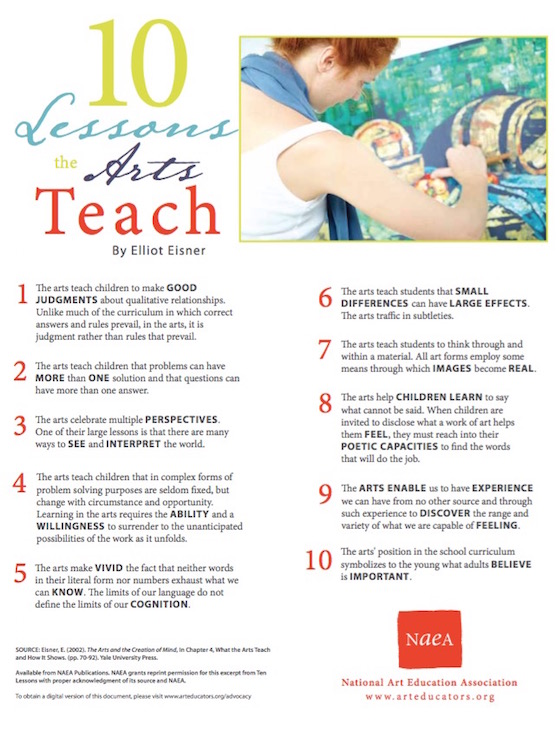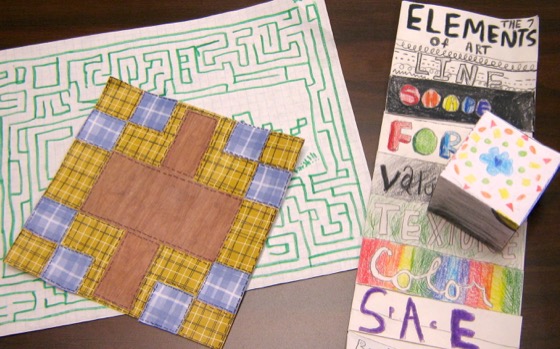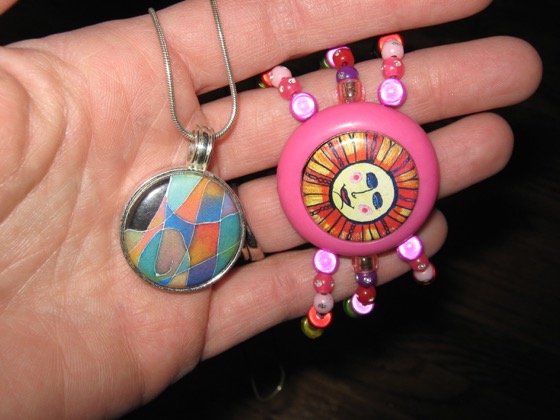Mom, can I get some Shopkins? Mom, will you buy me these LEGOSs? Mom, I need a new Hello Kitty shirt. Mom, we need this candy. Mom, Mom, Mom…
It seems like my kids are suckers for almost every marketing idea ever. Their constant desire to have everything they have ever seen or heard about got me thinking, “Why don’t I ‘market’ my art program? Why don’t I sell my program to the kids I teach and to their parents?” With parent-teacher conferences coming up, I decided this was the time to help my families buy into what we do in the art room.
Here are 4 things you can do to sell your art program.
1. Share the Benefits of Art Education
It seems that when parents sit down at my table half of them gush about how much fun they had in art class or about how much fun their child is having. It seems the other half share that they “can’t draw a stick figure.” Rarely do they discuss (or even know) the powerful benefits of having an art education class offered to their child. This year, I started using parent-teacher conferences as an opportunity to share some of the real benefits of art education by handing out this article by Elliot Eisner from the National Art Education Association.

You might want to give a copy to each parent you talk with or even add it to classroom packets that parents pick up. If you are worried that this is one more thing to do that you just don’t have time for, check out this Pinterest board. It is full of powerful information and ready-made handouts.
2. Show Them What You Do
We do our parent-teacher conferences at 6 weeks so students have the chance to improve their grades before the end of the 1st quarter. However, that leaves me without a lot to share with parents. I have maybe seen my students six times and, to be honest, I am still learning some of their names. If you are in the same boat, you know it can be tricky. So, instead of sharing student specifics, consider sharing what you do in the classroom. You may want to show a finished example of each project and an explanation of what is coming up.

In my own room, I find this strategy gives us something to talk about and helps the parents understand we do more than just cut and color in the art room.
3. Sell Your Fundraiser
I don’t do much fundraising, but I do post a lot of my students’ artwork to Artsonia. One of Artsonia’s features is that you can purchase products with your child’s artwork printed on it. Personally, I usually earn $300-$400 a year from these purchases. If you use Artsonia or another fundraiser, be sure to set out a few of the sample products if you have them.

It reminds parents that they can purchase the items but also allows them to see the quality of the products offered. I definitely think it helps increase my sales.
4. Share Ways Parents Can Support the Arts
Hopefully, a few of your parents will be interested in being able to do more with the arts. Being ready with a list of opportunities for involvement in art throughout the community is important. This list doesn’t have to be printed out or exhaustive. You simply need to be ready to answer the question, “What else can my child do in terms of arts education?” In my town, that includes knowing the dates for the yearly art festival, the website of our local art center, and a phone number for a retired art teacher who gives private art lessons.
No matter what you decide to do, selling your program to your parents will help them buy into what you are teaching their children, and we know there are few things more powerful than parents who care. Getting parents involved and knowledgeable will also help others in the community see the value of art education. I promise involved parents who love what you are doing for their kids will be your biggest asset!
{image source}
How do you promote the benefits of art education?
What do you enjoy sharing at parent-teacher conferences?
Magazine articles and podcasts are opinions of professional education contributors and do not necessarily represent the position of the Art of Education University (AOEU) or its academic offerings. Contributors use terms in the way they are most often talked about in the scope of their educational experiences.




